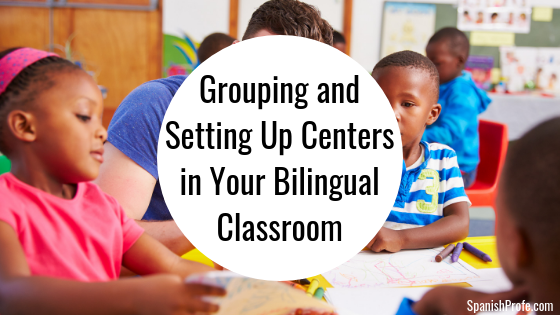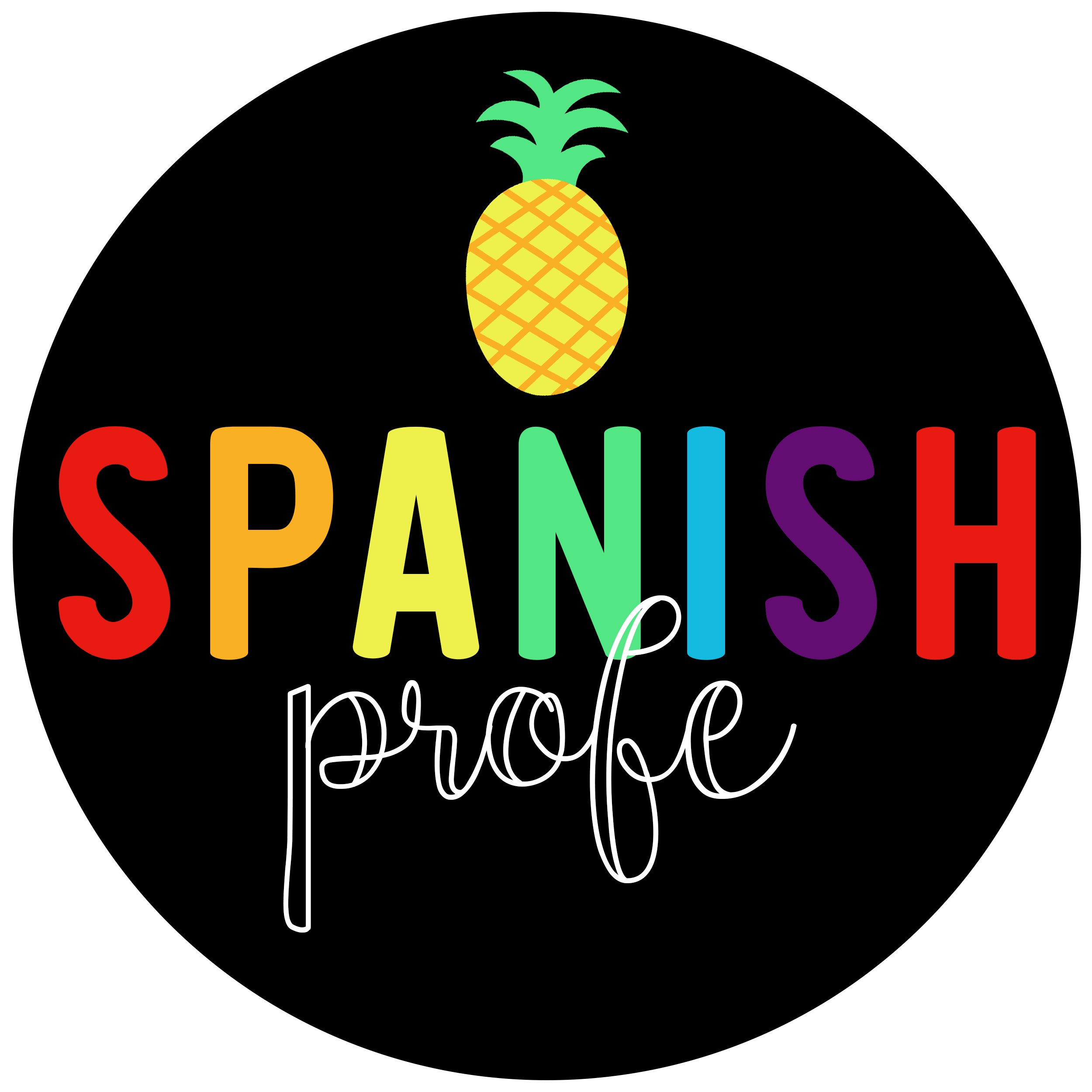
Lots of teachers get stuck on grouping when they are setting up centers in their bilingual or immersion classroom. There is no magic formula. Try something. If it doesn’t work… CHANGE IT!! Don’t get married to the idea of perfect centers. Centers in each class, grade level, program model and school vary.
Why? Every school, schedule and grade level is different. When bilingual teachers ask me how should I set up centers or how much time should be spent in each center— it’s like asking what came first the chicken or the egg. There is no right answer…. Because every classroom and school looks and runs differently.
This is article three in a series where we will talk about grouping and setting up centers in your bilingual classroom. Read article one and two here.
This is going to be a four or five part series on starting about maintaining productive centers in your Spanish immersion or bilingual classroom.
Lots of bilingual teachers spend too much time agonizing over groups. Don’t waste your mental energy. What works today might not work next week or month. You need to be prepared to change groups or your set up to best meet the needs of your students. Being flexible is key.
How to make groups:
-by level
-skill focus
-mixed group
You may also have different kinds of groups at different times of your school day.
For example; in my first-grade classroom, my reading groups are by level, my writing groups are by skill and for math I often do all three types of groups.
For reading, I meet with all of the level ‘F’s’ together. Then I meet with the level A/B’s. The frequency I meet with reading groups varies by level. I try to meet with my A/B group daily whereas I meet with my highest groups 2 times per week and mid-level groups three times a week.
For writing, I call a group of students that I see struggling with the same skill to meet with me briefly— punctuation, beginning/middle/end, writing on the line, using adjectives, etc. I check back in with them later.
How long should centers be?
Depends on your schedule and grade level—but` generally 15-20 mins. is typical. If you are in Kindergarten, maybe a bit less. This will also depend on your program model and if you are doing centers in both English and Spanish on the same day or classroom.
How many centers should there be?
This depends on your class set up, and the number of students. Generally anywhere from 4-6 groups work well. How many students are in each group depends on how they are grouped.
How do students know what to do at each center?
Model it to the class or have the whole class do the center (or something very similar) before they do it independently. Have a chart with the I can statement and list or pictures of what students are supposed to do.
Try to keep similar centers all year long— so that even if you change out the “secret code fall” center and put the winter version you will save yourself time as students will not need to relearn how to do something.
Keep it simple. Don’t spend your entire weekend prepping centers.
In the beginning of the year (or whenever you start centers), make sure to start slow. You need to spend time creating procedures and making sure students know what to do. You can find more information about this in article two of this series.
How to set up centers.
I usually keep mine in a plastic box, book box container or a large Zip-Lock bag and as we are starting centers I (or a student from the first groups) puts it in the middle of the table. You will need to make sure that you have enough papers, set or supplies so that students can easily complete their center.
I have also found it helpful to keep certain writing centers or book report in certain places of the room and teach students to quietly get a paper on their way to the next center. This is also helpful if you have some students doing 1 task and others doing something else.
Remember there is no perfect way. Change it if it doesn’t work. Be flexible.
Another common problem bilingual teachers encounter with centers is students not understanding why they are doing different activities. Why is Miguel using syllable blocks, Carlos reading a book and Elizabeth on the iPad?
This needs to be explained multiple times. I remind them that some people need extra help and support whereas others don’t.
For example, if someone already knows how to ride a bike you wouldn’t keep their training wheels on. They would ride without. Others might need training wheels or extra support and others might need to ride a tricycle until they are ready to move up to the next level. (Similar analogies can be made with swimming). I tell students, that we are all at different places, and it would not be helpful for me to give everyone the same thing since we all need to improve at different skills and paces.
In part four of this series, we will talk about what students will do in centers.
Did you enjoy this article? Want tips and free resources in Spanish? Subscribe to Spanish Profe’s email list here.









